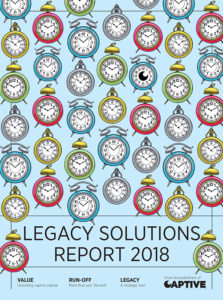What are the options when a captive or certain portfolio becomes unattractive or inefficient? The Captive Review Legacy Solutions Report highlights the run-off and legacy solution market and the potential options for captives that want to shut down or restructure.
While some captive owners and consultants may still be in the dark, legacy solutions and management can be a valuable strategic tool in the captive’s lifecycle.
With captives maturing and high merger and acquisition activity at parent level, corporates are increasingly looking to consolidate their captive operations and ensure as efficient structure as possible is in place.
When applied strategically, a legacy solution can function as an enabler, a tool used to release capital which can then be deployed to write new lines of business or sent back to the parent.
There are several different options when approaching legacy solutions. Selling the whole captive can be attractive when the subsidiary is no longer needed, while loss portfolio transfers, novations and commutations allow the removal of a specific portfolio of business while keeping the captive intact.
This report should provide captive owners and the wider industry with a better understanding of what solutions exist and how they can be applied.







